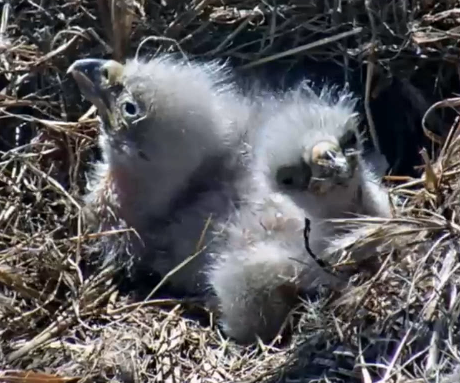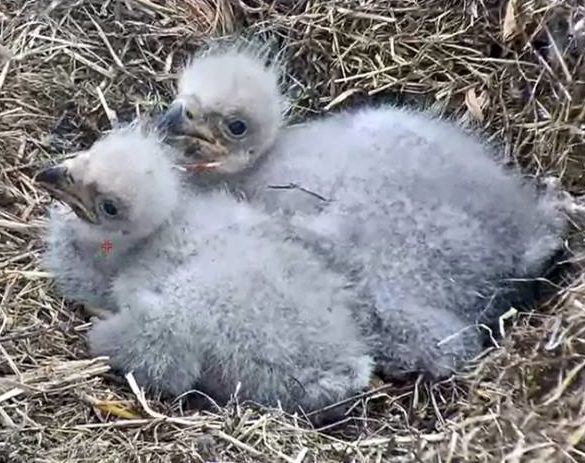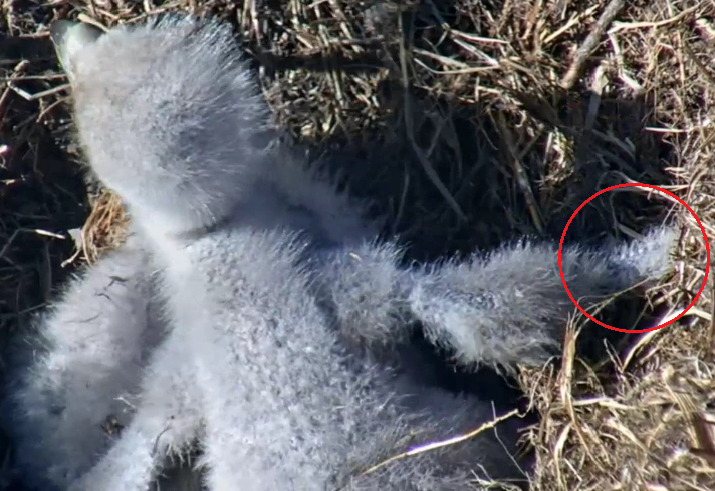UPDATE 12/3/2020:
I have created an entirely new page devoted to Second Clutches, with charts and data and research, and an overview of known Second Broods after the loss of eaglets. I now know of 3 instances of the latter phenomenon among Bald Eagles, preceding the events at the Southwest Florida nest last year.
The new page is here.
———————————————————————————–
Here is the original post I published on 4/1/2020.
I’ll admit, I was as surprised as anyone on February 22, 2020 when the eagle pair at the Southwest Florida nest produced a second clutch of eggs after losing their eaglet 27 days after it hatched. I know of the 8 instances of double clutches seen on streaming cams from 2006-2019, but all of those occurred after the loss of eggs, not eaglets. Nothing I had read or heard of indicated that Bald Eagles would lay a second clutch of eggs after losing an eaglet.
Until today.
The original first egg at the Southwest Florida nest was laid on 11/12/19 and hatched on 12/19/19. The second egg in that first clutch, laid on 11/16/19, did not hatch. After the eaglet’s death the parents continued to hang around the nest, bringing in new nesting materials, and they engaged in bonding behaviors and copulation.
On 2/22/20, 38 days after the loss of the first eaglet, the female parent, called Harriet, laid another egg, starting a second clutch, and 3 days later on 2/25/20 she laid a second egg. The parents then incubated both eggs for the next 37 1/2 days, and on 3/31/20 the first egg of the new clutch hatched. As of today the second egg has a large hole and the second eaglet seems to be making progress toward hatching.
It turns out that reclutching by Bald Eagles after loss of an eaglet is not unprecedented. I have been doing research on the success and failure of Bald Eagle clutches, and today I came across an article by A.L. Bryan, Jr., L.B. Hopkins, C.S. Eldridge, I.L. Brisbin, Jr., and C.H. Jagoe, published in 2005 in the journal Southeastern Naturalist. The article, titled Behavior and Food Habits at a Bald Eagle Nest in Inland South Carolina, reports observations at a nest in south central South Carolina in 1997, 1998, and 1999.
In the 1997-98 breeding season the nest produced 2 eaglets which fledged in February 1998. The following November the parents began their new breeding season. I quote from the article:
"In November 1998, the eagle pair initiated another breeding attempt at Pen Branch and at least one nestling was presumed to have hatched (a feeding was observed on 9 December 1998). The pair abandoned this breeding attempt approximately 7 days later for unknown reasons (adult eagles were observed setting on the nest, either incubating eggs or brooding young, on 10 and 14 December). The pair initiated a second breeding attempt at Pen Branch in late February 1999 that produced 2 nestlings. These nestlings were discovered on the ground in dense vegetation by our personnel on 20 May and 7 June 1999, at approximately 55 and 73 days of age. These birds were taken to the South Carolina Center for Birds of Prey where they remained through August 1999, when they were released north of Charleston, SC."
The eaglet from the first clutch was only a few days old when the parents abandoned the nest, whether because the eaglet did not survive, or for some other reason. The authors of the article speculate that the female parent may have been a new mate and was perhaps not experienced in caring for a nestling. But their observations were not close or complete enough to be sure of the reason for the abandonment.
What is interesting from my perspective is that a re-clutch about 2 months after loss of an eaglet successfully produced two new eaglets. The reason why those eaglets did not fledge successfully on their own and ended up on the ground and in need of rescue is unknown.
But now I know that the events at the Southwest Florida nest this breeding season do not represent a first.





You must be logged in to post a comment.